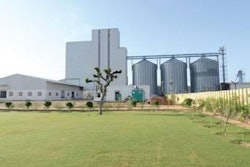U.S. authorities from the Animal and Plant Health Inspection Service (APHIS) and poultry company veterinarians trying to stamp out highly pathogenic avian influenza (HPAI) from turkey and chicken egg-laying flocks in the United States face an unpredictable, elusive foe in the avian influenza virus.
The avian flu fighters face a disease threat that winds its way across the globe in migrating birds, changes its genetic makeup continually and periodically shifts in virulence. The avian influenza strains now infecting commercial poultry flocks in the U.S. share genetic lineage with ones circulating in Asia and, uncharacteristically, are highly pathogenic to poultry while not causing illness in their wildfowl hosts.
So far, the highly pathogenic avian influenza outbreaks in the U.S. this year have resulted in the death or depopulation of more than 43 million birds in 20 states.
Governmental authorities and the poultry industry are counting on summer heat to suppress the disease’s transmission. In the meantime, vaccines for the H5N2 avian flu strain are being readied in case virus outbreaks in poultry continue in the fall of 2015.
Global avian flu challenges
While the U.S. poultry industry focuses on the current H5N2 avian influenza outbreaks – and the question of whether or not this high-path strain will continue infecting flocks in the fall – it would be wise to keep watch on the global epidemiological picture.
In the webinar, “Avian influenza: Control efforts and trade impacts,” Dr. Mary J. Pantin-Jackwood, outlined the worldwide threats to poultry posed by avian influenza.
Pantin-Jackwood, research veterinary medical officer at USDA’s Southeast Poultry Research Laboratory, identified numerous threats worth watching, including the following:
- The low pathogenic H9N2 virus circulating in Asia, Middle East and Africa is a significant problem in poultry. Well adapted to poultry, the virus causes high morbidity and sometimes mortality. It is widespread and has donated genes that have helped originate new reassortants circulating today.
- The highly pathogenic H5N8 which started in South Korea has also made incursion into Europe at the end of 2014. Since 2014 there have been numerous outbreaks in many countries of H5N8, H5N2 and H6N6 reassortant viruses.
- The H5N1 virus caused outbreaks in Africa as well as the Middle East and Russia and remains a threat in 2015.
The H5N8 HPAI virus, which emerged in South Korea and Japan in the winter of 2014, has caused disease outbreaks in wild birds and poultry. This virus is referred to as the Intercontinental H5N8 HPAI virus because, in Spring 2014, it moved to the wildfowl breeding grounds in Russia (Siberia) and western Alaska. In Fall 2014, the virus appeared in Europe, North America, Japan and Korea.
The all Eurasian H5N8 virus has mixed with North American low pathogenicity avian influenza viruses creating new mixed-origin H5N2 and H5N1 viruses.
Avian flu’s antigenic changes
One of the biggest challenges in protecting poultry is that the avian influenza viruses are constantly changing, Pantin-Jackwood said.
Avian influenza is a virus whose genetic identity is constantly drifting, shifting and mixing. The nature of its genetic machinery is to be perpetually forgetting what it was and encoding itself anew.
This makes avian influenza a difficult virus to protect against, whether in the immune system of an individual chicken or turkey or the veterinarian’s laboratory in developing a vaccine to protect millions of poultry. It hampers efforts to get an antigenic bead on what to protect against.
Plus, the natural host and reservoir of the avian influenza virus are in wild birds, which migrate across and between continents. An avian influenza virus in North America today may be swapping genetic material with one that was on another continent during the last migration cycle of water fowl.
To view the webinar, visit www.wattagnet.com/webinars.aspx .
The webinar, "Avian influenza: Control efforts and trade impacts," was presented by WATT Global Media and sponsored by Zoetis.
Mary J. Pantin-Jackwood is with the Exotic and Emerging Avian Viral Diseases Research Unit Southeast Poultry Research Laboratory, U.S. National Poultry Research Center, Agricultural Research Service, U.S. Department of Agriculture, Athens, Georgia.

















